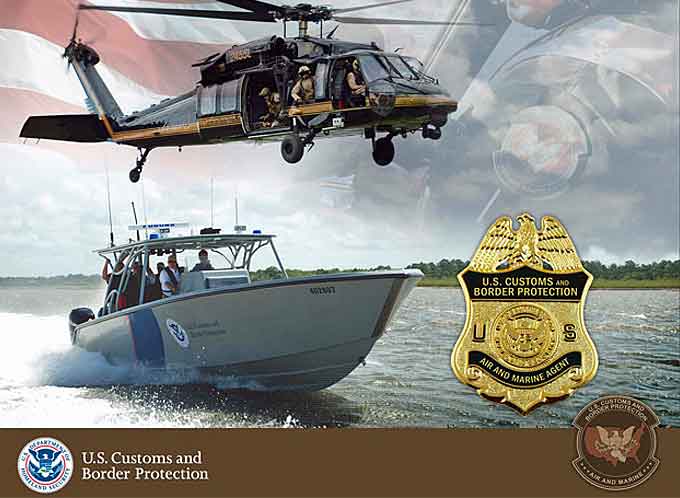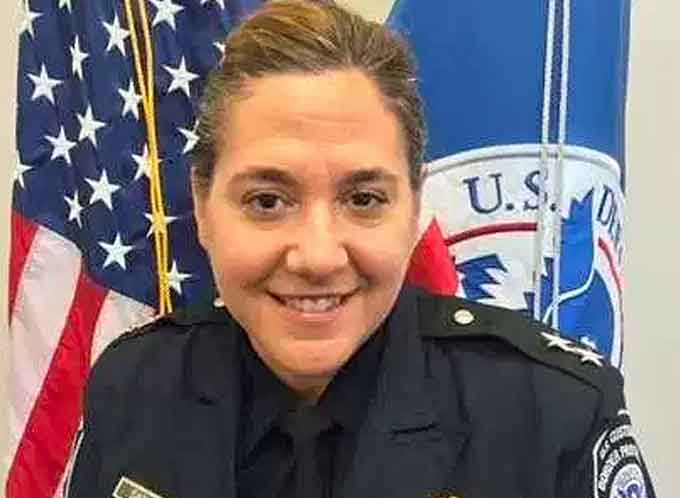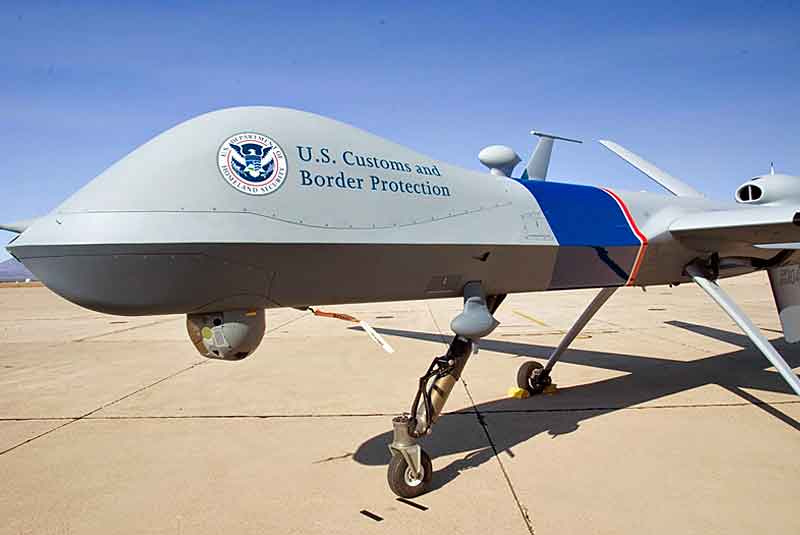
Fifteen years ago, the Department of Homeland Security (DHS) became a Cabinet-level department to coordinate and oversee a national strategy to prevent terrorist and terrorist weapons from entering the United States.
Created after September 11, 2001, the move integrated 22 different federal departments and agencies, and unified efforts to secure the nation.
U.S. Customs and Border Protection (CBP) was initially formed by combining inspection and enforcement elements of the U.S. Customs Service, Immigration and Naturalization Service including the U.S. Border Patrol, and the U.S. Department of Agriculture Animal and Plant Health Inspection Service.
In 2004, DHS transferred Air and Marine Operations to CBP where it became the agency’s experts in airborne and maritime law enforcement.

“As we mark this milestone agents and officers across Florida continue to take an active role protecting the homeland by developing the means to isolate and ultimately mitigate the terror threats of the world we live in today,” said Diane J. Sabatino, Director Field Operations for Miami and Tampa Field Offices.
“Frontline personnel at all Florida ports of entry identify targets of interest and provide valuable information for analysis and investigation to our National Targeting Center and law enforcement partners.”
Over the past 15 years, CBP has achieved major milestones toward protecting the nation while securing international trade and travel in an expeditious manner.
Some highlights include deploying the Unmanned Aircraft System in 2004, arresting the New York City Times Square bomber in 2010 and returning to One World Trade Center in 2016, for the first time since September 11, 2001.
What follows are a few highlights of CBP’s endeavors to keeping America safe.
- 2003 – President George W. Bush proposed to create the Department of Homeland Security subsequently forming U.S. Customs and Border Protection.
- 2004 – DHS transfers Air and Marine Operations from U.S. Immigration and Customs Enforcement to CBP.
- 2005 – CBP’s Air and Marine Operations first deploys the Predator B to enhance law enforcement operations along the Southwest Border.

- 2006 – CBP unified its air and marine assets under the management of CBP’s Office of Air and Marine, the largest civilian law enforcement air force in the world, and broke ground on the National Air Training Center facility in Oklahoma City.
- 2007 – CBP established the National Targeting Center-Cargo to identify high-risk cargo shipments destined to the United States.
- 2008 – CBP launched Global Entry, a Trusted Traveler program to expedite processing for pre-approved, low-risk travelers.
- Today there are more 1.4 million Global Entry members.
(Learn about the Global Entry program and how it can help you speed through international airports! Also, find out about other benefits that Global Entry members enjoy. Courtesy of U.S. Customs and Border Protection and YouTube)
- 2009 – CBP agriculture specialist in Freeport, Texas discovers a weevil previously unknown and not currently described in science databases.
- CBP’s agriculture specialists work at 167 ports of entry protecting U.S. agriculture industries by intercepting invasive insects and plants and foreign animal and plant diseases.
- 2010 – CBP officers arrest the Times Square Bomber minutes before his international flight was to depart JFK.
(Three Customs and Border Protection agents talk about their call to action in the arrest of Faisal Shahzad. Courtesy of CNN and YouTube. Posted on May 10, 2010)
- CBP supports humanitarian efforts following a devastating 7.0 magnitude earthquake in Haiti.
- 2011 – CBP made updates to critical infrastructure to open Ready Lanes at 14 border-crossing locations nationwide.
- 2012 – CBP introduced Centers of Excellence and Expertise to facilitate timely resolution of trade compliance issues nationwide.
- CEE’s trade experts help frontline CBP ports of entry to identify and seize more than $1.2 billion in counterfeit consumer imports annually.
(CBP’s 10 unique Centers of Excellence and Expertise specifically handle the 10 major categories of international commodities. The centers will greatly increase the level of communications with legitimate importers and manufacturers to better facilitate their products entering the U.S. and work with them to help stop counterfeit and unsafe products from entering the U.S. Courtesy of U.S. Customs and Border Protection and YouTube)
- 2013 – CBP began managing the Tethered Aerostat Radar System, capable of detecting aircraft at a range of 200 miles.
- 2014 – CBP launches South Texas Campaign, a proactive corridor strategy that leverages federal, state and local resources to combat transnational criminal organizations.
- 2015 – CBP plays crucial role in 22-day search for two escaped Clinton Correctional Facility prisoners.
- CBP scientist provides pollen analysis leading to identification of Baby Doe and subsequent arrest of her murderer.
- 2016 – CBP returns to New York City’s One World Trade Center 15 years after September 11, 2001.
- 2017 – CBP announces construction of border wall prototypes that will be evaluated to identify the most effective design to achieve complete operational control of the nation’s southern border.
- CBP responds to support hurricane recovery operations in Texas, Florida and Puerto Rico following three category 4-5 hurricanes that resulted in nearly $300 billion in damages and more than 350 victims killed.
(A CBP AMO Black Hawk crew working from Ramey Air Force Base in Aguadilla, Puerto Rico has been supplying the small mountainous community of Castaner, Puerto Rico with daily critical supplies including medicine. The isolated town was receiving no relief after hurricane Maria destroyed much of the community’s infrastructure until the AMO crew discovered it. Courtesy of U.S. Customs and Border Protection and YouTube. Posted on Oct 10, 2017)
- 2018 – CBP expands biometric entry/exit capabilities that fulfill a congressional mandate to keep America safe.
Today, CBP employs about 60,000 men and women who each day process more than 1 million passengers and pedestrians and $6.5 billion worth of imported goods arriving into the U.S. Agency employees collect more than $120 million in duties, taxes, and other fees.
Every day, CBP Field Operations officers, Air and Marine Operations agents, and U.S. Border Patrol agents serve on the frontline to stop the flow of illicit drugs into the country and bulk currency out of the country.
They seize an average of 5,863 pounds of illicit narcotics each day, disrupt another 222 pounds of the deadly drugs, and seize $265,205 in undeclared or illicit currency daily.
They also stop $3.3 million worth of products with Intellectual Property Rights violations.
Field Operations agriculture specialists intercept 352 pests at U.S. ports of entry and 4,638 materials for quarantine of plant, meat and animal byproduct and soil.

















